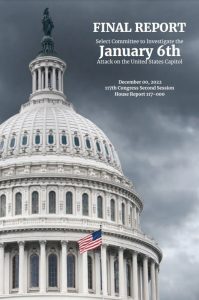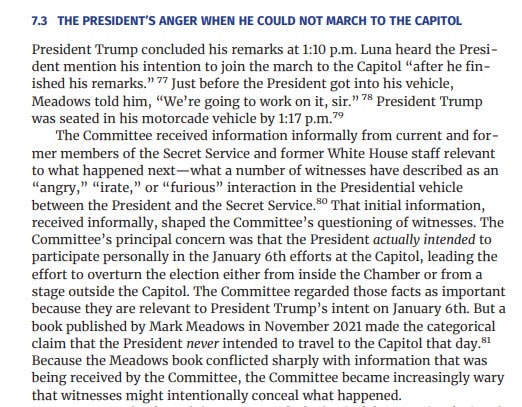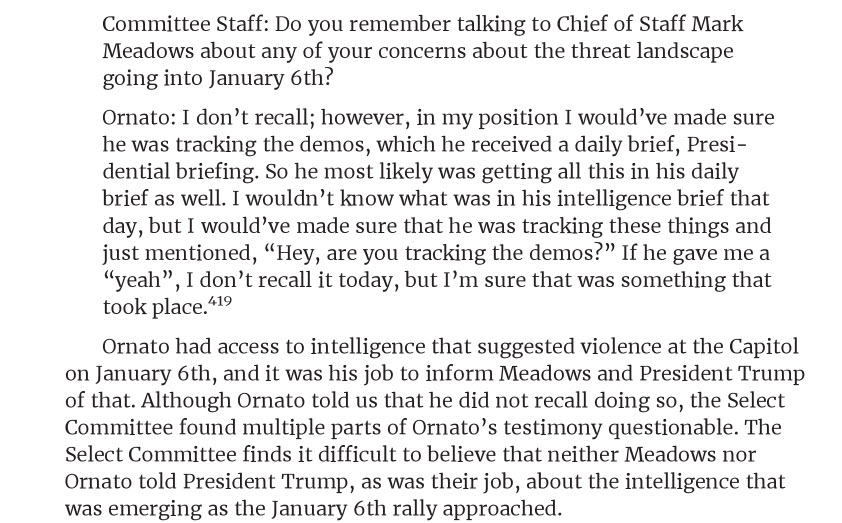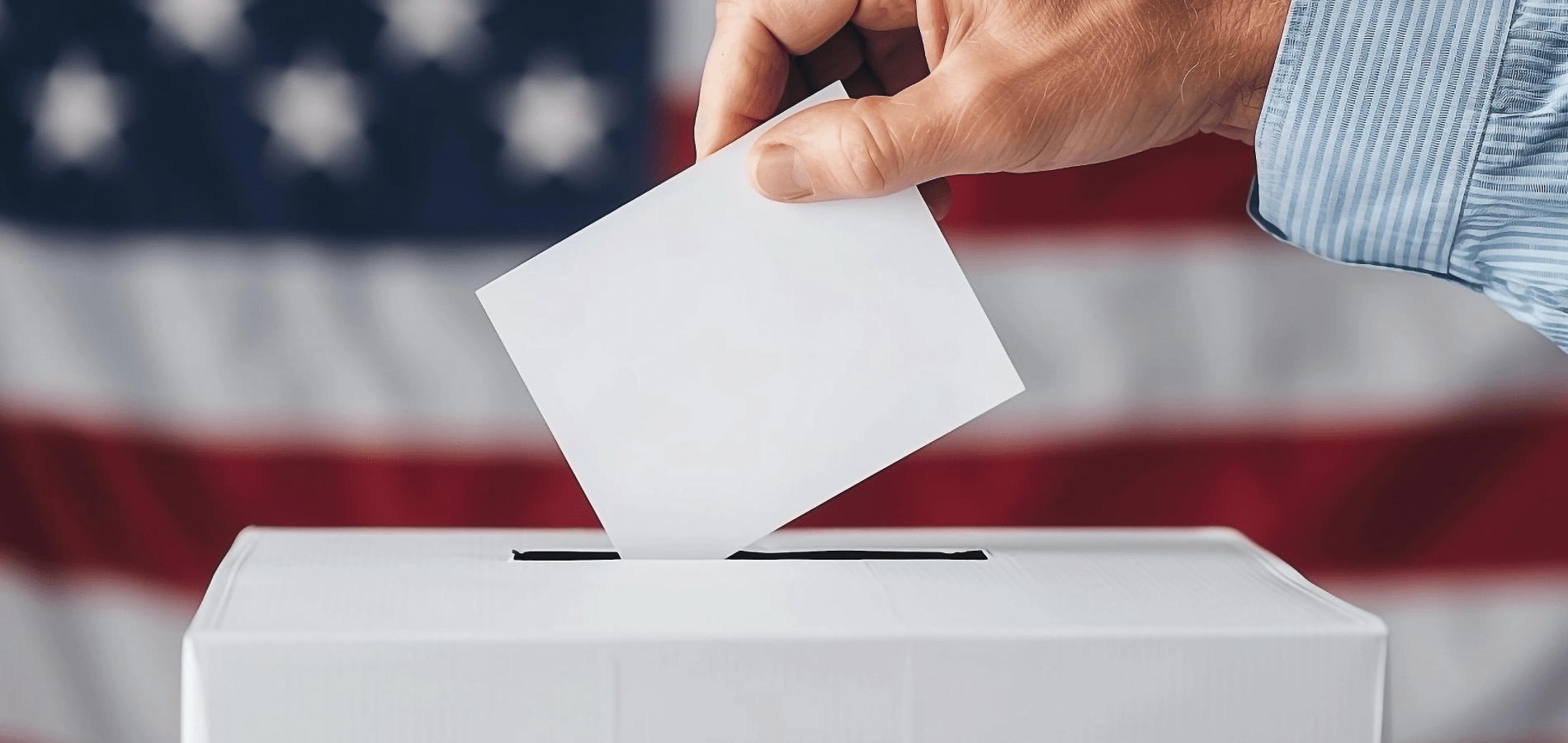The House committee investigating the January 6, 2021 insurrection at the U.S. Capitol held its final meeting last month on Monday, December 19 and released their final report three days later, on December 22. The report, which is the culmination of an 18-month investigation and over 1,000 interviews, is now available in HeinOnline’s U.S. Presidential Impeachment Library and U.S. Congressional Documents database.

In the case that you don’t want to read all 800+ pages of the report, below is a summary of the most important details.
Prosecution Recommendations
At the panel’s final meeting, they recommended that former-President Donald Trump be prosecuted by the Department of Justice for:
- Obstruction of an official proceeding
- Conspiracy to defraud the United States
- Conspiracy to make false statements
- Assisting or aiding an insurrection
- Conspiring to injure or impede an officer
- Seditious conspiracy
In addition, the committee named several others as participants in the conspiracies, including former-DOJ attorney Jeffrey Clark, Trump’s chief of staff Mark Meadows, and Trump’s lawyers John Eastman, Kenneth Chesebro, and Rudy Giuliani.
Trump’s Role
By now, Trump’s tweets, speech, and actions on January 6 have been heavily disseminated, and you can read more about them on the HeinOnline Blog here. However, the report officially holds Trump responsible for the events on January 6, 2021, stating “That evidence has led to an overriding and straight-forward conclusion: the central cause of January 6th was one man, former President Donald Trump, whom many others followed. None of the events of January 6th would have happened without him.”[1]Final Report of the Select Committee to Investigate the January 6th Attack on the United States Capitol (2022). This document can be found in HeinOnline’s U.S. Congressional Documents database.
The committee also indicates that “President Trump’s decision to declare victory falsely on election night and, unlawfully, to call for the vote counting to stop, was not a spontaneous decision. It was premeditated.”[2]Final Report of the Select Committee to Investigate the January 6th Attack on the United States Capitol (2022). This document can be found in HeinOnline’s U.S. Congressional Documents database. Additionally, they gathered evidence that Trump had raised approximately $250 million from his supporters by claiming that the election was stolen.
The report states that Trump wanted to be taken to the Capitol on January 6 in order to participate, as noted by evidence from “several sources about a ‘furious interaction'”[3]Final Report of the Select Committee to Investigate the January 6th Attack on the United States Capitol (2022). This document can be found in HeinOnline’s U.S. Congressional Documents database. when Secret Service refused to allow him to go. His former press secretary, Kayleigh McEnany, stated, “So to the best of my recollection, I recall him being – wanting to saying that he wanted to physically walk and be a part of the march and then saying that he would ride the Beast if he needed to, ride in the Presidential limo.”

The report also states that as the riot proceeded, Trump watched it on TV and did not take any action to prevent the violence: “President Trump did not contact a single top national security official during the day. Not at the Pentagon, nor at the Department of Homeland Security, the Department of Justice, the F.B.I., the Capitol Police Department, or the D.C. Mayor’s office. As Vice President Pence has confirmed, President Trump didn’t even try to reach his own Vice President to make sure that Pence was safe.”[4]Final Report of the Select Committee to Investigate the January 6th Attack on the United States Capitol (2022). This document can be found in HeinOnline’s U.S. Congressional Documents database.
Intelligence Failure
The report also describes how intelligence and law enforcement agencies received information that January 6 was likely to be violent. On January 3, 2021, the Department of Justice was notified of intentions to occupy and invade the Capitol. However, the report presents that the White House deputy chief of staff, Tony Ornato, did not provide this information to the White House.[5]Final Report of the Select Committee to Investigate the January 6th Attack on the United States Capitol (2022). This document can be found in HeinOnline’s U.S. Congressional Documents database.

Additionally, multiple aides told the committee that they reached out to Trump to try to get him to prevent any violence on January 6, but to no avail.
What’s Next?
It’s now up to the Department of Justice to move forward with prosecutions—especially since Trump has announced his intention to run for president in 2024. However, it is currently not clear what, if any, actions will be taken. The list of House members that were referred to the ethics committee, including House Minority Leader (and candidate for Speaker of the House) Kevin McCarthy and Reps. Jim Jordan of Ohio, Scott Perry of Pennsylvania, and Andy Biggs of Arizona, will likely not move forward now that the House has a Republican majority. However, Congress has recently approved the Electoral Count Reform Act to help protect the counting of electoral votes in presidential elections, which will help prevent this from occurring again.



